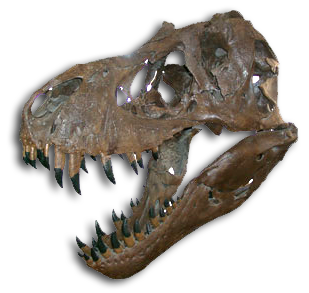Item Number
1842
Type
image
Description
Amphibian
Size
24 x24
Age
Paleozoic, Lower Permian
SciId
Cheliperpeton latirostre /Amblypterus
Status
in inventory
Display/Storage
Display
Building
Zuhl Museum
Original Site
Germany
Date Acquired
2008
Source
Fossilien Salerie, Tucson
Gallery/Room\Floor
History of Life Gallery
Notes
Cheliderpeton and Amblypterus Fossils – It is somewhat of a rarity to find two such well-preserved fossils in a single matrix. These two animals both existed during the early Permian period, nearly 300 million years ago, in the area of modern Germany, where this piece was found. Cheliderpeton, the larger animal, was a carnivorous amphibian, while Amblypterus was an early ray-finned fish. Both went extinct during the Permian period. Perhaps the greatest mass extinction our planet has seen occurred about 250 million years ago, when an estimated 90 percent of species disappeared. The time marks the transition from the Permian to the Triassic periods, and from the Paleozoic to the Mesozoic eras. The cause of this mass extinction is still under study. Cheliperpeton latirostre Identified by Dr. Thomas Perner, Neue Mauerstrabe 4, 61348 Bad Homburg v.d.H., Labeled as Temnospondyl and fish,
Preview

Description
Cheliderpeton and Amblypterus Fossils – It is somewhat of a rarity to find two such well-preserved fossils in a single matrix. These two animals both existed during the early Permian period, nearly 300 million years ago, in the area of modern Germany, where this piece was found. Cheliderpeton, the larger animal, was a carnivorous amphibian, while Amblypterus was an early ray-finned fish. Both went extinct during the Permian period. Perhaps the greatest mass extinction our planet has seen occurred about 250 million years ago, when an estimated 90 percent of species disappeared. The time marks the transition from the Permian to the Triassic periods, and from the Paleozoic to the Mesozoic eras. The cause of this mass extinction is still under study. Cheliperpeton latirostre Identified by Dr. Thomas Perner, Neue Mauerstrabe 4, 61348 Bad Homburg v.d.H., Labeled as Temnospondyl and fish, 32 X 24
Keywords
Amphibian Cheliderpeton and Amblypterus Fossils – It is somewhat of a rarity to find two such well-preserved fossils in a single matrix. These two animals both existed during the early Permian period, nearly 300 million years ago, in the area of modern Germany, where this piece was found. Cheliderpeton, the larger animal, was a carnivorous amphibian, while Amblypterus was an early ray-finned fish. Both went extinct during the Permian period. Perhaps the greatest mass extinction our planet has seen occurred about 250 million years ago, when an estimated 90 percent of species disappeared. The time marks the transition from the Permian to the Triassic periods, and from the Paleozoic to the Mesozoic eras. The cause of this mass extinction is still under study. Cheliperpeton latirostre Identified by Dr. Thomas Perner, Neue Mauerstrabe 4, 61348 Bad Homburg v.d.H., Labeled as Temnospondyl and fish, 2008 Paleozoic, Lower Permian Fossil
Keywords
Amphibian Cheliderpeton and Amblypterus Fossils – It is somewhat of a rarity to find two such well-preserved fossils in a single matrix. These two animals both existed during the early Permian period, nearly 300 million years ago, in the area of modern Germany, where this piece was found. Cheliderpeton, the larger animal, was a carnivorous amphibian, while Amblypterus was an early ray-finned fish. Both went extinct during the Permian period. Perhaps the greatest mass extinction our planet has seen occurred about 250 million years ago, when an estimated 90 percent of species disappeared. The time marks the transition from the Permian to the Triassic periods, and from the Paleozoic to the Mesozoic eras. The cause of this mass extinction is still under study. Cheliperpeton latirostre Identified by Dr. Thomas Perner, Neue Mauerstrabe 4, 61348 Bad Homburg v.d.H., Labeled as Temnospondyl and fish, 2008 Paleozoic, Lower Permian Fossil


